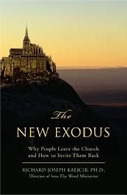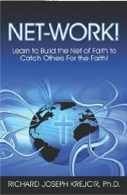What Are We Looking For in the Bible?
by Michael S. Horton
© 1996, Modern Reformation Magazine, "Scripture" (May / June Issue, Vol. 5.3). All Rights Reserved.
We must not tell chiefly of people, of their faith as an attracting example and of their sins as a repelling example, but we must tell of the revelation of the grace of God in Christ."1 Author of the remarkably useful four-volume set, Promise and Deliverance (Paidea Press), S. G. De Graaf in the above quote sounds a note that seems to have all but vanished even in much of Reformed preaching and Bible-instruction these days. It is part of a method of biblical interpretation that has been a hallmark of Reformed hermeneutics (interpretation), in opposition to rationalistic, pietistic, subjective, moralistic and mystical tendencies. In this brief space, I want to appeal to my own Reformed colleagues to give greater attention to this so-called "redemptive-historical" method. In that spirit, I have chosen more of an "open letter" format over a more in-depth survey of perspectives. For the latter, a number of works could be recommended.2
Are We Missing the Point When We Study the Bible?
Calvin Theological Seminary professor Sidney Greidanus has provided a masterful overview of the Dutch debates of the 1930's and while the historical details may not be relevant for most readers, the issues raised cannot be dismissed in our own situation.3
While the liberal Protestants on the Continent were already busily engaged in downplaying the historical dimension of revelation, emphasizing the ethical, psychological and spiritual applications provided by the various biblical writers, a number of prominent Reformed theologians saw similar, if less overt, problems within conservative congregations. According to Greidanus, biblical interpretation during the early part of the century was often marked by the following three tendencies:
1. The Illustrative Interpretation
In this approach, David and Jonathan teach us about friendship; Hannah's prayer for a child teaches us about persistent prayer; Jacob's struggle with God at Peniel illustrates our spiritual struggle; David's defeat of Goliath teaches us about conquering the "Goliaths" of our life; Joshua teaches us how to be leaders, and so on. Similarly, then, the New Testament figures--including Jesus--are there chiefly to illustrate "life lessons." D. Van Dijk, one of the defenders of the redemptive-historical view, warned that the illustrative approach reduces the sacred events of redemptive history to little more than a lesson we could have learned as well from any other non-biblical figure: "Appealing to the normative pronouncements of Scripture, I could as well preach on the death of Prince William I in this exemplary manner as I could on, e.g., the death of Jacob; I could as well hold up Napoleon as a deterrent example as, e.g., Nebuchadnezzar because in both cases the normativity must be carried in from elsewhere."
2. The Fragmentary Interpretation
Here, the unity of revelation in one historical progression of God's plan in Christ is broken up by a number of "histories." "They dissolve Holy Scripture into a series of spiritual, edifying fragments," said Klass Schilder. "The one Word of God is shattered into many words about God, and the one work of God [redemption] is dissected into many separate works which are related somehow to God and religion."
3. The Atomistic Interpretation
Closely related to the fragmentary approach, this method isolates a text or the person or event from the whole fabric of redemptive history. Instead of asking, "Where does Aaron or Peter fit into the broad sweep of God's fulfillment of his covenant promise in Christ?", one asks, "What does this one verse mean?" Verse-by-verse approaches as well as inductive Bible study methods fall into this category and while the preacher may feel some sense of accomplishment in having dissected the sentence, it is hardly the Bread of Life, as one of the critics warns: "Either all kinds of practical remarks are tacked onto the several parts of the text with the result that the sermon, because the main theme was not caught, does not exhibit any unity and the hearers complain that it sticks together like sand--either that, or the sermon centers around one particular 'atom' which has been abstracted from the totality of the text."6
Six Reasons Why We Fail To Hear Christ In Preaching
Even more menacing are the preaching approaches that arise out of these interpretive methods. Here Greidanus offers examples of the sort of preaching that results:
1. Biographical Preaching
In the illustrative approach, we end up preaching Abraham, Moses, David, Peter, Paul and Mary, but not Christ! Or if we do "preach Christ," he is simply one more of these biblical examples to lead us on our way. It is deeply human-centered rather than God-centered and, therefore, Christ-centered. Again this begs the question: Why can we not use the Qur'an for such biographical preaching? After all, many of the same moral "truths" are there as well.
2. Psychologizing
It is likely that many readers heard sermons during Passion Week that guided hearers to reflect on Mary's grief, Peter's inner turmoil, Judas' emotional state, and the states of our Lord's soul. But can one really say that these appear in the text as clearly or at least as centrally as the sermon seems to have indicated? Do we think that the culmination of the sacrificial system of the Lamb of God is less interesting and relevant than, say, a presumed similarity between Paul's Damascus Road conversion and our own? Often in this approach, hearers are directed to the inner life of biblical characters in order to discover their own inner life: "Do I have this kind of faith? Am I willing to do what so-and-so did?" Thus, it will inevitably lead not to a self-examination that leads us to despair of ourselves and seek Christ alone outside of us, but to a labyrinth of self-absorption. This method, says Holwerda, buries "the real content of the text under an avalanche of edifying remarks."7
3. Spiritualizing
In this approach too, history is pushed aside in an attempt to "get beneath" the actual story of God's speaking and acting. The woman reaching out to touch Jesus' garment simply becomes an allegory for our receiving Christ and the wedding feast at
4. Moralizing
Of all the epithets attached to the all-too-popular style of preaching in the modern era, the charge of moralism is the most frequent and not without reason. Every other tendency we have described is a handmaiden to this chief abuse of Scripture within conservative Protestant circles. As Greidanus describes moralism, it is "the (semi) Pelagian tendency which denies sola gratia...Moralistic preaching is legalistic; it issues imperatives without the divine indicative; it makes of the gospel a moral law."8 None of the critics complained that there was any overt rejection of Reformed theology in favor of Arminian or Roman Catholic dogma, but that in an effort to be relevant and practical, the text was forced to say something other than what it really said. Surely God could have picked better moral examples than Abraham and Sarah or the crafty Jacob or David the adulterer and murderer. Van Dijk wrote, "At best one may say that a few good, scriptural remarks were occasioned by the text, but that is, strictly speaking, no longer Ministry of the Word...For then the content of the sermon is determined not by the text itself but by the preacher's ingenuity."9
5. Typologizing
"A few examples of typologizing in sermons of the thirties are: Joseph's obedience in looking for his brothers is a prophetic type of Christ's obedience; his sale to the Ishmaelites prefigures Christ's being sold by Judas...."10 At least the motive here is to preach Christ and to preach him as the promised Messiah, but it fails to allow the text to speak for itself, to point to Christ in its own way. Christ is already present there in the text, whether Old or New Testament, and we do not have to tack him on somehow to the story.
6. Doctrinal Preaching
We love doctrine as Reformation people, and doctrine prepares us as nothing else for our task as preachers. Thus, the Bible must be studied carefully in order to discern what its unified teaching is concerning the major doctrines it reveals. However, the redemptive-historical model follows the Reformers in insisting that the preached Word is not merely a word about God or Christ, but is itself the Word of God! Therefore, the goal is not merely to explain doctrines and lecture about these important truths, but to actually bring Christ to the people through the proclamation. The point is not to educate or to instruct (this is hopefully done thoroughly in other contexts), but to break open the Rock in the wilderness, to allow the water to flow to the thirsty. This does not mean that we avoid doctrine in our sermons, but that we see our mission in preaching as sacramental (i.e., God giving his grace) rather than merely educational. In the words of the Second Helvetic Confession, "The preached Word is, in a special sense, the Word of God."
How A Preacher Can Be Reformed Without His Parishioners Knowing It?
These critics of the various types of preaching we have described, Greidanus included, have been concerned that the pietistic, mystical and subjective streak in Protestantism--tendencies that were dominant in the preaching before the Reformation--had become routine even in circles in which orthodox theology was insisted upon officially. It is not a question of heresy, but of biblical interpretation. Similarly, one often hears the same sermons in churches deeply and honestly committed to Reformation confessions that one might have heard growing up in Roman Catholicism, liberal Protestantism, or Arminian fundamentalism and evangelicalism. This happens for various reasons.
First, many pastors are concerned that their churches are full of the unconverted, and with good reason. To be sure, there are many hypocrites in our churches who do not have the fruit of righteousness because there is no root. But this has always been true, as Calvin, echoing Augustine and Paul, recognized: "There are many wolves within and sheep without." But our Dutch defenders of the redemptive-historical method warn us of taking God's work into our own hands here. Exemplary preaching (i.e., preaching Bible examples) makes sense if one's greatest interest is in separating the sheep from the goats by taking inventory: "One Sunday Abraham would be held up as the hero of faith, followed by the application: Do you have that faith also?...The next Sunday we would be told that as Jacob we must know our 'Jabbok' or at least our 'Peniel'...Then again it was the soul of Peter, of Judas, of Pilate, etc."11 "Did Christ arise in your heart?", say these critics, becomes a way of separating the wheat from the chaff, but it is "the curse of mysticism that festers in our circles. It imposes an entirely different problem on us than does the Gospel. The Gospel says: Easter is really a fact! Do you believe that? But mysticism says: That Jesus arose in Joseph's garden we believe all right, but the really important question is: Did he arise in your soul?...Decisive is the repetition of Easter in everyone personally."12
How often do believers lose the joy of their salvation as a result of exhortation-centered preaching that drives them to take inventory of their fruit-bearing? Some consider such an emphasis key to vital spirituality, but how can one know if he or she has really experienced "Easter" sufficiently or possesses the faith illustrated in the lives of Bible "heroes"? We ought to heed the counsel of the defenders of the redemptive-historical approach in their advice to preach the gospel to everyone and not to attempt to sift through God's harvest. We must trust the Word, both Law and Gospel, to do its work in God's sovereign hands. Constant inwardness and self-examination with the purpose of discerning sufficient faith or grace in one's heart or its fruit in one's life will only lead to either self-righteousness or despair: "How in the world," Van Dijk asks, "could one ever expect to come to certitude in this way?"13 How indeed. As Calvin insisted, our mission as pastors is to preach faith, not doubt; to lead them to Christ's sufficiency, not to their own.
Second, many pastors are more worried about the moral condition of the nation and of their own congregation than any other matter. One can view, for instance, a prominent conservative Presbyterian minister on television on any given Lord's Day and be likely to hear a sermon that leads off with one or two lines from the Bible (never to reappear) before launching into the real message: America's moral decline, the dangers of Clinton, and the importance of family values. Most of these sermons could be preached by a Mormon if Christ were not tacked on at the end in an invitation to receive Christ. (Perhaps these days even that would not distinguish the two religions.) Often, more time is given to the exegesis of the Constitution and the letters of the founding fathers than to the Gospel and the letters of the apostles.
I realize that this is an extreme example, but it has been repeated in varying degrees across the landscape as I have encountered it. It is the experience of a growing chorus of frustrated parishioners who are tired of receiving stones for bread. If it isn't American values, it is self-esteem, career guidance, tips for life of some sort: "How To Get Up When Life's Got You Down," or some such drivel. I recently preached in a large conservative evangelical church in which the title "sermon" in the bulletin was replaced with "Life Perspectives." Had people come expecting a Word of salvation from God or a "life perspective" from Horton?
Does it matter? If it doesn't matter, we are no better than the liberal churchmen whose sentimental, moralistic, political, psychological, mystical and subjective orations we have criticized for so long. But enough of the bad news.
Allow me to finish my jeremiad by outlining the basic features of the redemptive-historical approach, and again I will summarize the points made so well by Greidanus:
1. Redemptive History is History
The triumph of Barth in many Reformed circles not only led to a collapse of the Law into the Gospel, but created a Kierkegaardian "paradoxical" dualism between history and supra-history. Still saddled with this liberal dualism between faith and history, neo-orthodoxy and pietism often tend to downplay the fact that, as Paul told Festus, these events did not take place in a corner. They were public and historical, not simply individual and subjective. This is Luther's point when he stresses "Christ extra nos," Christ outside of us, in opposition to mysticism. Redemptive-historical preaching and Bible reading, therefore, will focus on every text as a part of one seamless fabric of promise and fulfillment. The whole Bible is concerned with history--not with history in general, but with the unfolding of God's redemptive plan in Christ from Genesis to Revelation. The Bible is not about me or the problems of my generation, but about specific saving events in the past, present and future that incorporate me into a community, a "cloud of witnesses."
2. Redemptive History is a Unity
This is why a lot of redemptive-historical preaching is done from the Old Testament as well as the New. The Law and the Gospel run from the beginning to the end of the Bible and the revelation of Christ is like a light that grows brighter as the story progresses. Instead of breaking this story up into dispensations or atomistic verses, we should see the Bible as talking about the same thing from beginning to end: Christ, and the covenant of grace through which the believer is united to and participates in his life.
3. Redemptive History Means Progression
Some, in reaction against dispensationalism, make so much of the unity of revelation that they neglect the differences between the Old and New Covenants and fail to distinguish the national promises made to
Conclusion
But is all of this biblical? In other words, are we imposing an approach on the text that is not there--precisely what we are accusing others of doing? Audaciously, Jesus accused the biblical scholars of his day of not knowing the Scriptures (Mt 29:29; Lk 24:45) and declared, "You diligently study the Scriptures because you think that by them you possess eternal life. These are the Scriptures that testify about me, yet you refuse to come to me to have life" (Jn
To preach the Bible as "the handbook for life," or as the answer to every question, rather than as the revelation of Christ, is to turn the Bible into an entirely different book. This is how the Pharisees approached Scripture, however, as we can see clearly from the questions they asked Jesus, all of them amounting to something akin to Trivial Pursuits: "What happens if a person divorces and remarries?" "Why do your disciples pick grain on the Sabbath?" "Who sinned--this man or his parents--that he was born blind?" For the Pharisees, the Scriptures were a source of trivia for life's dilemmas. To be sure, Scripture provides God-centered and divinely-revealed wisdom for life, but if this were its primary objective, Christianity would be a religion of self-improvement by following examples and exhortations, not a religion of the Cross. This is Paul's point with the Corinthians, whose obsession with wisdom and miracles had obscured the true wisdom and the greatest miracle of all. And what is that? Paul replies, "He has been made for us our righteousness, holiness and redemption" (1 Cor
Notes
1. S. G. De Graaf, cited in Sidney Greidanus, Sola Scriptura: Problems and Principles in Preaching Historical Texts (Toronto: Wedge Publishing, 1970), 27.
2. See Herman Ridderbos, Paul: An Outline of His Theology (Eerdmans, 1975); When The Time Had Fully Come (Paideia Press, 1982); Geerhardus Vos, Redemptive History and Biblical Interpretation (Presbyterian and Reformed, 1980); Biblical Theology (Eerdmans, 1948, 1985); Gerard Van Groningen, Messianic Revelation in the Old Testament (Baker, 1990); S. G. De Graaf, Promise & Deliverance, 4 volumes (Paideia Press, 1981); Meredith Kline, Kingdom Prologue, 2 volumes (self-published, 1986); Edmund Clowney, The Unfolding Mystery: Christ In The Old Testament (NavPress, 1988).
3. Sidney Greidanus, op. cit.
4. Ibid., 59.
5. Ibid., 62.
6. Ibid., 63.
7. Ibid., 76.
8. Ibid., 79.
9. Ibid., 82.
10. Ibid., 83.
11. Klass Schilder, cited in Greidanus, op. cit., 96.
12. Ibid., 96.













